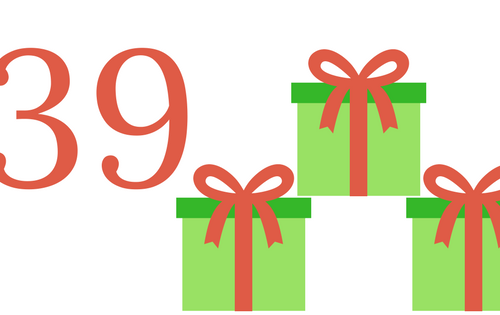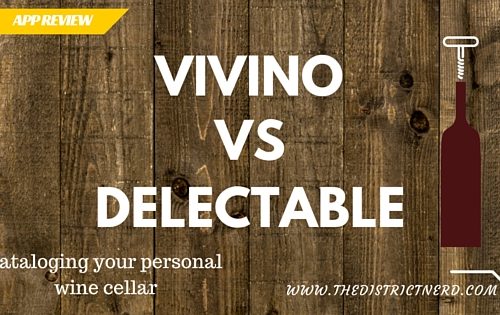A brief history of Chardonnay, Sauvignon Blanc, and Reisling
Let’s talk about white wine. While it may seem simple from the outside, I find it to be one of the most surprising wines.
If you’ve read my About page, then you know this blog is about delving into the wine and beer making process. (If you haven’t then I invite you over to learn more about me and my blog). But before we delve into the technicalities of making wine I wanted to share some interesting wine facts.
There are 18 varietals of white wine, but there are only three popular white wines: Chardonnay, Sauvignon Blanc, and Riesling. You probably guessed that by walking down any aisle in a liquor store. But there are probably things you don’t know and that is the purpose of this blog post. I’m not going to cover the same things that you can find when googling wine basics or in any wine basics book (I know I’ve looked). This is the information I had to search to find about the history of the wines.
Sur lie: where after the grapes have been crushed the juice and the dregs remain together to let the natural yeasts bring out the flavor.
Chardonnay
There are several reasons to admire Chardonnay. The first reason is its longevity. The Romans were drinking an early version of Chardonnay in 200  B.C. (Kolpan, Smith, & Weiss, 2008) The grape crossed the world and quiet literally stood the test of time – take that Stonehenge! When it comes to winemaking Chardonnay is an extremely malleable grape responding easily to the environment, the terror, and wine techniques, like sur lie and oak. (Kolpan, Smith, & Weiss, 2008) Either due to its popularity or its facility, the thin-skinned lemon colored grape is an extremely popular grape, particularly in California where it has been planted in over 100,000 acres. (Grumdahl, 2009) However, the best Chardonnay comes from Cote d’Oré SW of Dijon in Eastern France. (Kolpan, Smith, & Weiss, 2008) But you can also find high quality Chardonnay from places such as Napa Valley and Sonoma Coast in California and Finger Lakes in New York. Each of these regions brings something different to what we know is Chardonnay. For instance, grapes grown in hot climates become fruiter and sweeter, because the grape is able to convert more glucose into sugar. However, this same grape grown in colder climates where the ripening process is slower allowing the grape to pick up more of the exterior elements making it acidic, tarter, and less fragrant than other grapes. (Kolpan, Smith, & Weiss, 2008)
B.C. (Kolpan, Smith, & Weiss, 2008) The grape crossed the world and quiet literally stood the test of time – take that Stonehenge! When it comes to winemaking Chardonnay is an extremely malleable grape responding easily to the environment, the terror, and wine techniques, like sur lie and oak. (Kolpan, Smith, & Weiss, 2008) Either due to its popularity or its facility, the thin-skinned lemon colored grape is an extremely popular grape, particularly in California where it has been planted in over 100,000 acres. (Grumdahl, 2009) However, the best Chardonnay comes from Cote d’Oré SW of Dijon in Eastern France. (Kolpan, Smith, & Weiss, 2008) But you can also find high quality Chardonnay from places such as Napa Valley and Sonoma Coast in California and Finger Lakes in New York. Each of these regions brings something different to what we know is Chardonnay. For instance, grapes grown in hot climates become fruiter and sweeter, because the grape is able to convert more glucose into sugar. However, this same grape grown in colder climates where the ripening process is slower allowing the grape to pick up more of the exterior elements making it acidic, tarter, and less fragrant than other grapes. (Kolpan, Smith, & Weiss, 2008)
Sauvignon Blanc
 The sauvignon blanc grape originates in the Loire River Valley of France, where the influential towns are Sancerre and Pouilly-Fumé. (Kolpan, Smith, & Weiss, 2008) The grape’s flavor is a mineral with aromas of green grass, herbs, citrus fruits, and melons. Behind France, New Zealand is the second most popular country for growing sauvignon blanc. Some growers choose to use a minimalist approach to the élevage, which means that nothing is done to the grape instead management of the plants is made through pruning the leaves, canopy management, and controlling the amount of acid in the ground. (Kolpan, Smith, & Weiss, 2008) In the Loire Valley it is the stony, mineral-rich terroir which creates the signature stony flinty mineral edge taste. In New Zealand the long, long days create a bouquet that is tart that is wildly tropical. (Kolpan, Smith, & Weiss, 2008) Once the grape have been harvested it is important to not touch the grapes, which ensures the grape-on-the-vine flavor. Grapes are harvested in the middle of the night, when they are coldest, tossed (stem and all) into the tank and pressed at the winemaker’s choice. (Kolpan, Smith, & Weiss, 2008) The ideal Sauvignon Blanc will reflect the grape-on-vine fruit flavor. (Kolpan, Smith, & Weiss, 2008) Later the juice will either be fermented in oak barrels creating a toast, oak, vanilla flavor or in steel, glass epoxy-lined cement tanks which creates a crisper, lighter, citrus and mineral flavor. Additionally, Sauvignon Blanc from Bordeaux is blended with Semillon and aged in oak. (Kolpan, Smith, & Weiss, 2008)
The sauvignon blanc grape originates in the Loire River Valley of France, where the influential towns are Sancerre and Pouilly-Fumé. (Kolpan, Smith, & Weiss, 2008) The grape’s flavor is a mineral with aromas of green grass, herbs, citrus fruits, and melons. Behind France, New Zealand is the second most popular country for growing sauvignon blanc. Some growers choose to use a minimalist approach to the élevage, which means that nothing is done to the grape instead management of the plants is made through pruning the leaves, canopy management, and controlling the amount of acid in the ground. (Kolpan, Smith, & Weiss, 2008) In the Loire Valley it is the stony, mineral-rich terroir which creates the signature stony flinty mineral edge taste. In New Zealand the long, long days create a bouquet that is tart that is wildly tropical. (Kolpan, Smith, & Weiss, 2008) Once the grape have been harvested it is important to not touch the grapes, which ensures the grape-on-the-vine flavor. Grapes are harvested in the middle of the night, when they are coldest, tossed (stem and all) into the tank and pressed at the winemaker’s choice. (Kolpan, Smith, & Weiss, 2008) The ideal Sauvignon Blanc will reflect the grape-on-vine fruit flavor. (Kolpan, Smith, & Weiss, 2008) Later the juice will either be fermented in oak barrels creating a toast, oak, vanilla flavor or in steel, glass epoxy-lined cement tanks which creates a crisper, lighter, citrus and mineral flavor. Additionally, Sauvignon Blanc from Bordeaux is blended with Semillon and aged in oak. (Kolpan, Smith, & Weiss, 2008)
Riesling
Riesling comes from the cold, dreary areas of Germany and Austria, where harsh conditions make it almost impossible for grapes to ripen to a sugar sweet

flavor. Riesling wine was created in response to the human need for something sweet. Unlike its boarding countries, Germany and Austria did not have access to the sugar trade, but they did have grapes. And while for the most part the conditions make it near to impossible for the grapes to ripen to a sweet flavor (the flavor we know) it was possible and it was this sweet wine that was the prize of Riesling. But the Germans and Austrians didn’t discriminate against wine and all wine was consumed with sweet wine being the apex. Over the years, it was necessary to create a system to distinguish the sugar levels in wine. When you purchase a German Riesling you’ll notice the rating system which is a combination of Roman numerals and German terms.
The riesling grape is a white grape that grows in cold climates primarily in Germany, Austria and Alsace, France (Kolpan, Smith, & Weiss, 2008). After it’s been harvested, the grapes juice is aged in neutral wood, steel, epoxy-lined cement tanks, or glass containers (Kolpan, Smith, & Weiss, 2008). The fermentation process has several options depending on the winemaker’s choices all which go to bringing out the sweetness and aroma. Either there is sur lie or the winemaker adds yeast to the fermentation process to create stronger flavors.
Okay, so we have covered the three popular white wines. I don’t know about you, but reading about wine makes me thirsty. During my research, it really made me want to try wines outside my comfort zone. Some of the best recommendations came from Drink This: Wine Made Simple by Dara Moskowitz Grumdahl. She does a great job of giving you recommendations for creating at home taste tests. I don’t have that skill yet, but I do recommend trying a Chardonnay and a Sauvignon Blanc from Marlborough county and a Riesling from Germany. Once you have let me know what you think?
Works Cited
Grumdahl, D. M. (2009). Drink This Wine Made Simple. Ballantine Books.
Kolpan, S., Smith, B., & Weiss, M. (2008). WineWise: Your Complete Guide to Understanding, Selecting, and Enjoying Wine; . Houghton Mifflin Harcourt.
[amazon_link asins=’0544334620,0471770647,B01FGN09SI,B01FGOM68S,B019TLT93Y,0345511654′ template=’ProductCarousel’ store=’districtnerds-20′ marketplace=’US’ link_id=’8933edae-a4bf-11e7-a3e4-31de983c711e’]






Lorene
July 20, 2016Your writing is very imsrispeve. I’m impressed at how well you express your points with original ideas and content. You have a real flair for writing quality and interesting material.
Adrienne
July 25, 2016Thanks Lorene. Its great to hear. I love what I do. And thanks for stopping by and leaving a comment.
Adrienne
August 20, 2017Thanks. It makes me happy to hear.
How To Throw A Wine Tasting in 3 Steps! - The District Nerd
May 30, 2019[…] wines with something in common, like type (all rose), region (Spain or California), or varietal (Chardonnay, Pinot Noir). It’s fun to compare wines that are similar. Don’t be afraid to […]